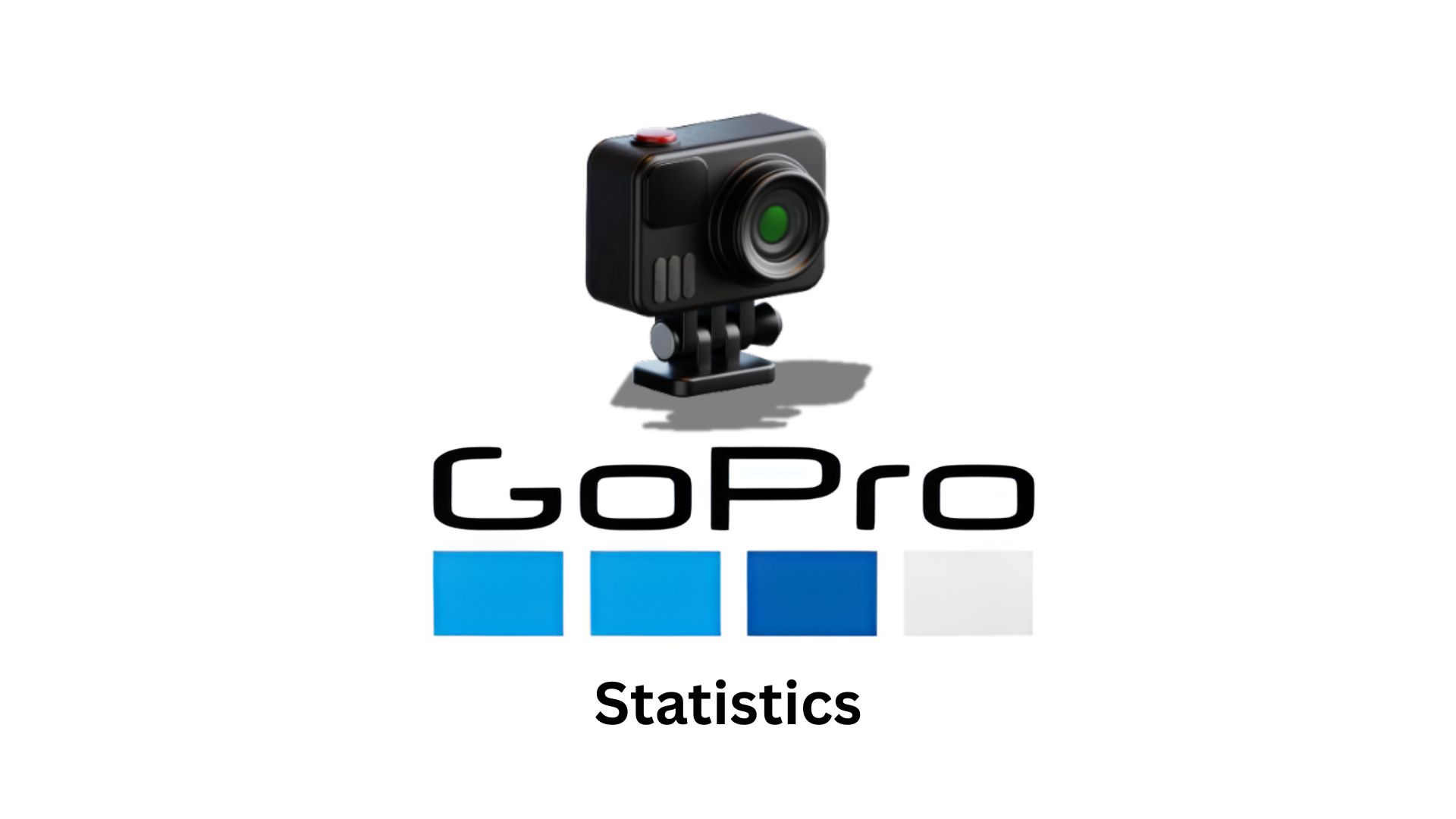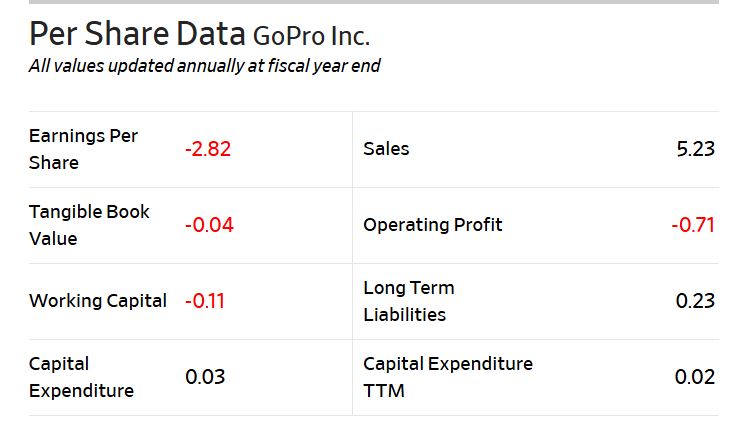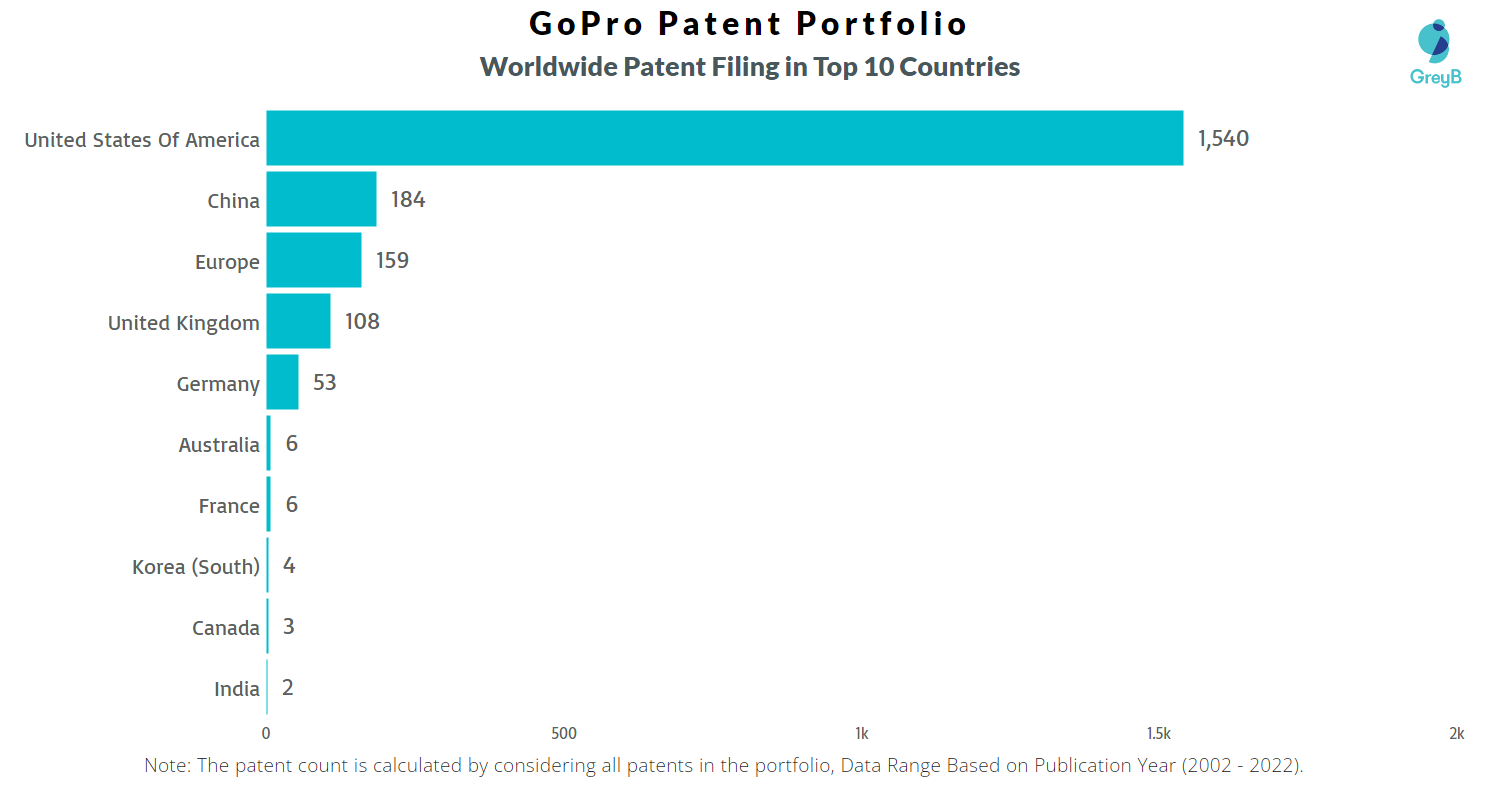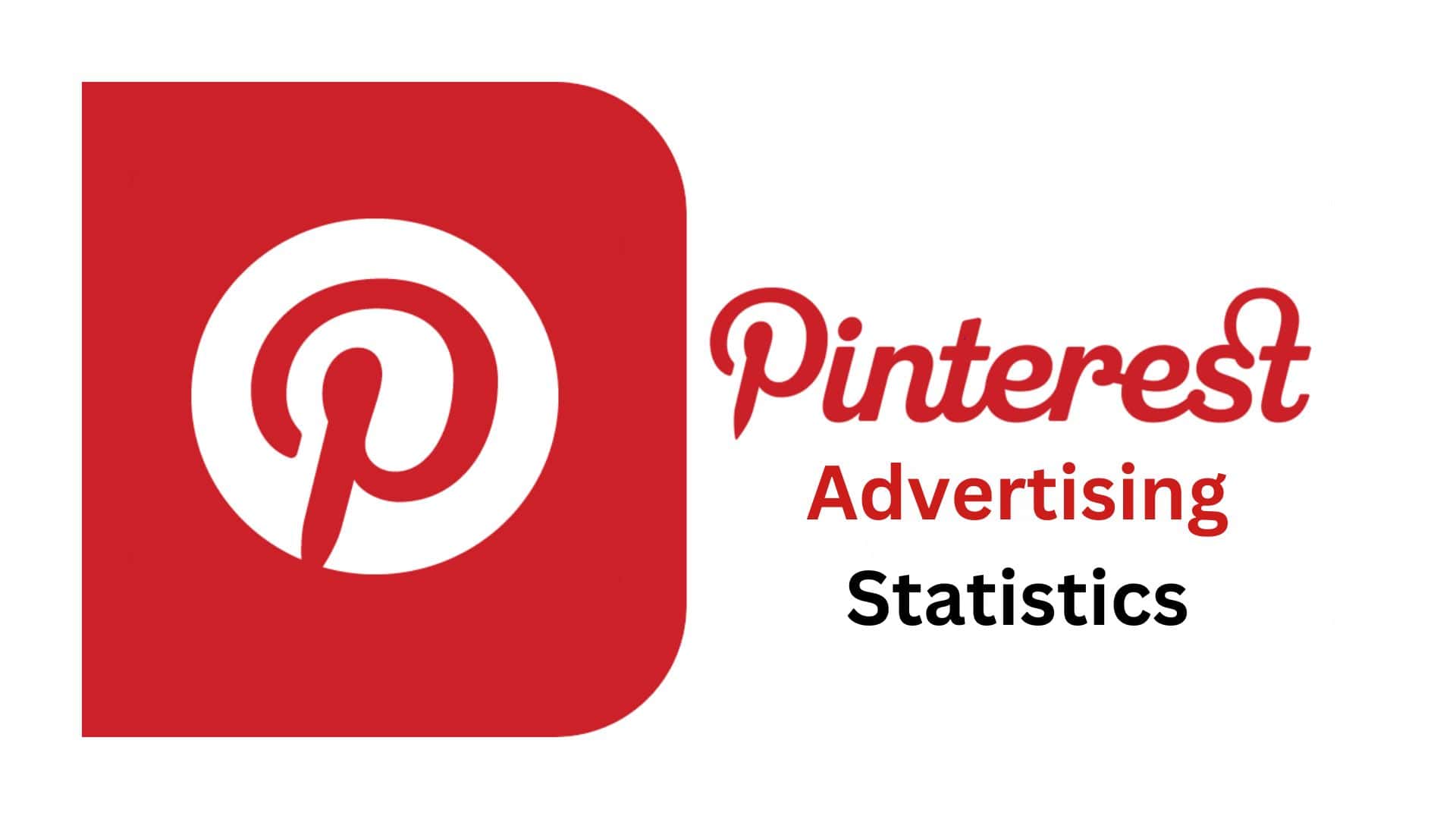GoPro Statistics By Revenue, Market Share and Facts (2025)
Updated · Nov 27, 2025

Table of Contents
- Introduction
- Editor’s Choice
- History of GoPro
- Fun Facts About GoPro
- GoPro Revenue, EBITDA And Net Income
- GoPro’s Per-Share Financial Overview
- GoPro Capital Structure
- GoPro Profitability
- GoPro MSRP Camera Revenue
- GoPro’s Subscription Business Growth
- GoPro Production Strategy
- GoPro Patents Statistics
- GoPro Forward Outlook And Challenges
- Conclusion
Introduction
GoPro Statistics: GoPro is the camera brand that most people prefer when considering action, adventure, and hands-free storytelling. By 2025, the company may no longer be the giant it was in its prime years. Still, the figures tell a clear story: the hardware remains the primary source of income, subscriptions are steady but slow-growing, and GoPro is investing considerable effort in reducing costs while transforming its business.
GoPro statistics, including revenue, units, margins, subscriptions, market context, and insights into what the data indicates next.
Editor’s Choice
- GoPro has disclosed US$163 million in Q3 2025 revenue, representing a 37% decrease compared to the previous year, and has sold 500,000 cameras, a 18% decline.
- Retail sales accounted for 75% (US$123 million) of total revenue, while GoPro.com brought in 25% (US$40 million).
- The revenue generated from subscriptions and services decreased by 3% to US$27 million.
- The gross profit margin was 35.1%, a minor decline from 35.5% a year ago.
- The earnings per share (EPS) were -$2.82, indicating a loss of $ 2.82 per share.
- The total debt ratio of 80.57 indicates that the company is highly dependent on borrowings for financing.
- The gross profit margin improved to 35.5% in Q1 2025 but was adjusted to 32.3% after considering a one-off inventory sale.
- Camera revenue was 71% dependent on the sale of cameras priced at US$400 or more, which shows GoPro’s commitment to high-end products.
- The revenue from subscriptions showed YoY growth of 4% and reached US$27 million in Q1 2025.
- The number of subscribers has increased to 2.47 million, with a retention rate of 70%, representing a 100-basis-point increase compared to the previous year.
- The gross margin for subscription exceeded 70%, which is significantly higher than hardware margins.
- The average revenue per user (ARPU) rose by 5% YoY, driven by the introduction of new tiers.
- GoPro has added Premium+ (US$99.99/year) alongside the existing Premium (US$49.99/year) and Quik (US$9.99/month) plans.
- The company is going to roll out the MAX2 camera with an emphasis on 360° and VR content capabilities.
- In fact, GoPro has announced a possible revenue of US$145 million for Q2 2025 (±US$10 million) and hopes to have US$75 million in cash at the end of the year with no debt.
History of GoPro
- 2002 — Nicholas Woodman founded GoPro after a surfing trip highlighted the need for rugged cameras that could capture close-up action.
- 2004 — The first product, a 35 mm film “HERO” wrist-mount camera, began retail sales.
- 2006 — GoPro introduced its first digital camera, the “Digital HERO,” marking a shift from film to digital video.
- 2009 — The HD HERO introduced 1080p high-definition to the lineup, becoming a breakthrough seller.
- 2011 — GoPro acquired CineForm to integrate its high-quality codec and 3D workflow into GoPro systems.
- 2012 — The HERO3 family debuted, 30% smaller with built-in Wi-Fi and up to 4K capture on the Black Edition.
- 2013 — Product refinements continued with HERO3+ and broader retail expansion; the brand gained strong visibility on YouTube.
- 2014 — GoPro completed its IPO at $24 per share, raising about $427 million and valuing the company near $3 billion.
- 2015 — GoPro acquired Kolor, adding spherical stitching software for 360-degree and VR content.
- 2016 — A multi-year global partnership with Red Bull was signed, making GoPro the official point-of-view camera provider across more than 1,800 events.
- 2016 — The Karma drone launched but was recalled in November due to in-flight power loss; a full refund program was offered.
- 2018 — The company exited the drone business and laid off staff, stating Karma would be its last drone.
- 2020 — A strategic shift to a direct-to-consumer, subscription-centric model was announced; subscriber counts accelerated alongside HERO9 Black sales, surpassing 500,000 by October and 670,000 by December.
- 2021 — Subscribers surpassed 1 million; GoPro closed the year with about 1.6 million subscribers and $1.16 billion revenue.
- 2022 — Subscription base exceeded 2 million.
- 2023 — Subscribers reached 2.5 million by Q3.
- 2024 — GoPro announced it had sold 50 million cameras since the original HD HERO in 2009; the HERO13 Black was introduced.
- 2025 — GoPro confirmed there would be no new Hero Black model for the year while maintaining HERO13 Black as the flagship; focus shifted to other models such as Max 2 and a refreshed entry model.
Fun Facts About GoPro
- The company was founded in 2002 by surfer Nick Woodman after a trip to Australia inspired him to capture close-up action shots.
- The name “GoPro” came from the surfing goal of “going pro,” which aligned with the brand’s aim to make users look like heroes in action footage.
- GoPro’s first product, the 35 mm film HERO, was launched in 2004 and was a waterproof, wrist-mounted camera designed for action sports.
- Early film units reportedly cost about US$3 to manufacture in China and retailed near US$20–30, giving the startup crucial early margins.
- Woodman funded the earliest phase by selling bead and shell belts from his van and later received over US$230,000 from his parents.
- The IPO priced at US$24 per share on June 26, 2014, raising about US$427 million and valuing the firm near US$3 billion on debut trading.
- In 2013, GoPro sold approximately 3.8 million Hero HD cameras, capturing roughly 45% of the U.S. camcorder market.
- GoPro briefly entered the drone market with the Karma, but a recall of approximately 2,500 units in 2016 was followed by a full exit from the drone business in 2018; Woodman reduced his salary to US$1 during the restructuring.
- By Q2 2025, the GoPro subscription had reached 2.45 million subscribers, with more than 13 million hours of customer videos stored in the GoPro cloud.
- At Q3 2025, GoPro still counted 2.42 million subscribers, while quarterly sell-through was about 500,000 cameras.
- Early prototypes included home-sewn wrist straps and mounts constructed from surf leashes, reflecting the brand’s origins in action sports.
- GoPro’s first major sales push included distribution in surf shops and on QVC, helping the young company surpass $ 350,000 in early sales.
GoPro Revenue, EBITDA And Net Income

(Source: gurufocus.com)
- In the third-quarter results of GoPro, a significant year-over-year slowdown is reported.
- The quarterly revenue was US$163 million, representing a 37% decrease from last year. This is mainly due to weaker demand and a reduction in unit sales — in fact, the company shipped around 500,000 cameras, representing an 18% decrease compared to the previous year.
- GoPro’s subscription and service income also dropped, but not as much, only 3% to US$27 million, which means that its recurring income stream was also affected by the overall slowdown.
- Retailing remained the main income source, contributing US$123 million, which accounts for 75% of the total revenue for the quarter.
- As a result, GoPro.com, which serves as the platform for both online sales and subscription revenue, generated only US$40 million, thereby accounting for 25% of the total turnover. Profitability experienced a slight dip as well.
- The company’s gross margin was 35.1%, which is very close to the 35.5% achieved in the same quarter of the previous year.
- All in all, the figures indicate that GoPro is going through a period of reduced hardware demand and a modest decrease in its subscription business, while balancing the proportion of revenue coming from traditional retail and online direct-to-consumer channels.

(Source: wsj.com)
- The figures mentioned above provide a brief overview of GoPro’s financial condition on a per-share basis.
- The earnings per share (EPS) of -2.82 means the company recorded a net loss of US$2.82 for each outstanding share, which is an indicator that the company was not profitable during the financial year.
- On the other hand, the sales per share of $ 5.23 show that GoPro generated $ 5.23 in revenue for each share, which is a good indication of its overall sales performance with respect to its share count.
- The negative book value per share is -0.04, meaning the company’s tangible assets (like property, cash, and inventory) are a little less than its liabilities when divided by the number of shares.
- This is typical when a company has a large debt or when intangible assets are significantly larger compared to other assets on the balance sheet.
- An operating profit per share of -0.71 indicates that, before tax and non-operating items, the core business of GoPro is still losing money.
- The working capital per share of -0.11 indicates that current liabilities exceed current assets, which suggests that the firm is experiencing liquidity issues.
- On the other hand, long-term liabilities per share at 0.23 are the company’s long-term debts or obligations assigned to each share.
- Capital expenditure per share and capital expenditure TTM (trailing twelve months) both present a figure of 0.03, indicating that GoPro is not investing significantly in new equipment or expanding its operations through investments relative to its outstanding shares.
- These numbers, combined, indicate that on the one hand, the company has good sales, but it’s under financial stress, with negative equity, a low level of reinvestment, and operational losses.
GoPro Capital Structure

(Source: wsj.com)
- The figures above, largely depicting GoPro’s capital structure and the way the company is financed through debt and equity, reveal the total debt-to-total equity ratio of 80.57, indicating that for each US$1 of equity, there exists about US$0.81 in total debt.
- Such a scenario speaks about a higher level of leverage when compared to the company’s equity base, thus suggesting that the company is heavily relying on borrowed funds.
- Furthermore, from the total debt-to-total capital ratio of 44.62, it can be inferred that 45% of GoPro’s total capital (meaning both debt and equity) comes from debt, which, on the other hand, is a reflection of a moderately leveraged position.
- In the same way, the total debt-to-total assets ratio of 22.48 shows that approximately 22% of the company’s total assets are financed through debt, which might not be extreme but is still very significant for a financially troubled company.
- The interest coverage ratio of -32.52 is a significant cause for concern — a negative ratio indicates that GoPro’s operational income is insufficient to cover its interest expenses, signalling operational losses.
- Such a situation usually occurs when the company’s earnings before interest and taxes (EBIT) are negative.
- The long-term debt-to-equity ratio of 11.91 implies that long-term borrowings constitute around 12% of GoPro’s equity, indicating that a major part of its leverage is through short-term obligations rather than long-term loans.
- The long-term debt-to-total capital ratio of 6.60 and the long-term debt-to-assets ratio of 0.03 (3%) both reinforce the idea that the long-term debt is a small part of GoPro’s total financing.
- While long-term debt remains modest, the company’s reliance on shorter-term borrowing and limited profitability makes its capital structure somewhat risky.
GoPro Profitability

(Source: wsj.com)
- The profitability metrics clearly demonstrate how well GoPro manages and operates its business, as well as the profit it generates in relation to its sales, assets, and equity.
- The 35.29% gross margin indicates that GoPro retains roughly 35 cents in gross profit for each dollar of revenue after paying its product costs. This is a relatively high margin for a hardware firm, indicating good control over manufacturing costs.
- On the other hand, the -13.51% operating margin indicates that the company is actually running at a loss after considering the operating expenses, which include marketing, R&D, and admin costs, among others. For every dollar of revenue, GoPro loses approximately 13 cents before tax and interest.
- The -16.61% pretax margin and -53.94% net margin reflect even deeper issues related to profitability.
- After taking into account all expenses, taxes, and other charges, the company records a net loss of almost 54 cents per sales dollar.
- Such an exceedingly large net margin is negative because it indicates that the company is consistently losing money, not just due to one-off costs, but also through restructuring and lower sales volumes.
- Negative numbers come up again when the returns issue is raised. The return on assets (ROA) is a whopping -57.03%, indicating that GoPro lost US$0.57 of every dollar its assets represented—a clue that it is not maximising its profit from its assets.
- A return on equity (ROE) of -122.20% also highlights the extent of the loss concerning stockholder investment; thus, stockholders are suffering negative returns because of the company’s overall losses.
- Lastly, the return on total capital (-22.59%) and the return on invested capital (-102.47%) suggest that GoPro’s investment in its operations is not yielding any positive returns.
- On the contrary, it is slogging through losses, which means that at this stage, profitability and efficiency are very low.
- Overall, while GoPro maintains a solid gross margin, its high operating costs and declining sales have led to deep net losses and negative returns, signalling that the company is struggling to convert its revenue and assets into profit.
GoPro MSRP Camera Revenue

(Source: investing.com)
- In the first quarter of 2025, GoPro’s gross margin climbed to 35.5%, indicating a positive trend in the company’s financials in comparison to the prior quarters.
- Therefore, the corporation made approximately 35 cents in gross profit for each dollar of sales before deducting operating expenses.
- Nevertheless, management during the earnings call revealed that the actual gross margin was 32.3% once a one-time inventory sale was considered.
- This revision infers that some of the reported improvement was due to a temporary accounting effect rather than a sustainable trend in profitability.
- The firm is still concentrating its efforts on the sales of premium cameras, which are the direct reasons for its higher pricing and improved margins.
- Indeed, 71% of GoPro’s total camera revenue was derived from models priced at US$400 and above, which points out that the majority of its sales are concentrated in the high-end segment.
- Such a policy secures GoPro’s brand equity and margin stability, even though total unit sales have been a bit wobbly.
GoPro’s Subscription Business Growth
- Continuously supported by fluctuations in hardware sales, GoPro’s subscription and service business remains among the strongest and most consistent areas of the company, demonstrating steady growth.
- This segment generated US$27 million in revenue during the first quarter of 2025, representing a 4% increase over the same period in 2024.
- The company counts 2.47 million subscribers, and this subscriber cohort contributes a gross margin of over 70%, which is far above its hardware margins.
- Furthermore, the retention rate has also improved to 70%, representing a one percentage point rise year-on-year, which implies that more customers are choosing to renew their subscriptions than to quit.
- GoPro’s subscription model has expanded, and it is now not only available to higher-end customers or those with big budgets, but also to those with more modest needs.
- The new tier, Premium+, launched in February 2024, comes with an annual fee of US$99.99. It is placed above the existing Premium plan (US$49.99/year) and the basic Quik plan (US$9.99/year).
- This multi-tier model provides the customers with a bigger choice, and at the same time, it helps GoPro to increase its average revenue per user (ARPU).
- Actually, the first quarter of 2025 marked a 5% yearly growth in ARPU, which is a testament to the new pricing structure and the value added in higher tiers that motivates users to spend more.
GoPro Production Strategy
- GoPro has bet on new products and partnerships as key drivers of its future growth.
- During the presentation, the company dropped a hint about the forthcoming MAX2, an upgraded version of the 360-degree camera, which is expected to deliver improved quality and performance for immersive content creation.
- The product is targeted to renew the interest of thrill-seeking and creative users who demand more advanced capabilities for VR and panoramic video.
- Apart from the cameras, GoPro has entered into a collaboration with the Italian motorcycle helmet brand AGV.
- The two companies will launch a collection of innovative motorcycle helmets. They will incorporate GoPro’s imaging tech into the helmet design.
- This merger targets the US$3 billion market, marking a significant milestone for GoPro, as it is no longer considered a company solely focused on traditional action cameras.
- The helmet market has been tapped by GoPro, which has already made the necessary adjustments to its product portfolio to cater to the needs of a wider demographic in both safety and lifestyle technology, rather than just relying on its cameras.
GoPro Patents Statistics
- The company GoPro, Inc. holds a total of 2,215 patents worldwide.
- Out of those 2,215 patents, 1,691 have been granted official patent status.
- Of the total patent portfolio, more than 81 % are currently active (still in force).
- The founder and CEO of GoPro, Nicholas Woodman, is named on 160 patents.
- The company founder Jill Woodman has no patents attributed.
- The majority of GoPro’s patent filings are located in the United States, followed by China and countries in Europe.

(Source: GreyB)
- GoPro recorded 87 patent applications and 230 granted patents in its recent filing cycle, showing that many of the company’s innovations continue to move successfully through the approval process. The lower number of filings does not signal reduced activity, because patent publications often appear many months after the actual submission.
- In the previous cycle, the company submitted 184 applications and received 224 grants, reflecting steady progress in securing legal protection for its technologies.
- A stronger filing period occurred earlier when GoPro submitted 276 applications and secured 271 granted patents, showing a close balance between filings and approvals.
- GoPro experienced one of its busiest innovation phases when it filed 307 applications, while 200 patents were granted during that period.
- Another cycle recorded 191 filings with 182 granted patents, demonstrating consistent momentum in advancing its intellectual property.
- GoPro maintained high activity with 257 applications supported by 213 successful grants, indicating that a large share of its filings were approved.
- A peak filing period is visible when GoPro submitted 395 applications, although 172 patents were granted at that time, showing a larger pipeline awaiting review.
- Another period reflected 257 filings, backed by 109 granted patents, highlighting continued investment in core technologies.
- Earlier filing momentum included 125 applications with 47 approvals, representing an expansion phase in GoPro’s innovation development.
- Activity increased from a lower baseline when GoPro filed 55 applications and secured 24 grants, marking early growth in its patent portfolio.
- GoPro entered the patent landscape with 39 applications and 7 granted patents, reflecting the company’s early innovation efforts.
- Its initial filing period showed 11 applications supported by 5 granted patents, which later grew significantly as the company scaled its technology footprint.

(Source: GreyB)
- GoPro currently holds 1,810 active patents, showing that the company continues to protect and maintain a large portion of its technology portfolio.
- GoPro also has 405 expired or inactive patents, indicating technologies that are no longer protected by patent.

(Source: GreyB)
- GoPro has filed 1,540 patents in the United States, showing that most of its innovation activity is concentrated in its home market.
- The company has registered 184 patents in China, reflecting its strategic interest in protecting technology in one of the largest electronics markets.
- In Europe, GoPro has secured 159 patents, confirming consistent efforts to safeguard its designs and imaging technologies across the region.
- The United Kingdom accounts for 108 patents, indicating strong protection in a key market for action-camera products.
- Germany holds 53 patents, reinforcing GoPro’s focus on engineering-driven markets.
- Australia and France each have 6 patents, reflecting moderate levels of intellectual property protection in these regions.
- Korea has 4 patents, and Canada has 3 patents, showing limited but targeted activity.
- India and Brazil each account for 2 patents, marking small but notable entries into these emerging markets.
- Taiwan, Hong Kong, and Mexico each hold 1 patent, representing minimal filings but ensuring basic protection in these territories.
GoPro Forward Outlook And Challenges
- GoPro’s forecast for the remainder of 2025 indicates a mix of cautious optimism and ongoing challenges.
- The firm is predicting an income of about US$145 million in the second quarter, with a range of plus or minus US$10 million, indicating that it is maintaining modest expectations while navigating a relatively slow-moving market.
- The company will have US$75 million in cash by the end of the year, with no debt, which is part of the company’s plan for being an entity with a well-balanced, strong financial position.
- Furthermore, GoPro will focus on retaining its 2.4 million subscribers, rather than expanding rapidly to gain new customers, indicating that the company’s priority is now on stabilising the market.
- GoPro, however, sees some of its regions as problem areas, despite these positive signs. Revenue drops in Asian markets have been so bad that they were even mentioned on the company’s earnings call.
- One GoPro strategy to deal with this is to move its supply chain out of China gradually.
- The hike in the costs of materials and tariffs, and trade risks has already affected company profitability.
- While on the one hand, GoPro’s activity in such regions is being hampered, the micromarket conditions, on the other hand, force the company to add innovation as a means of managing costs and enhancing competitiveness.
- Meeting the market’s demand for a wide range of new products at lower prices has always been GoPro’s strategic move to stabilise the company’s operations and prepare the ground for profitable working.
- GoPro has been selling the new camera, MAX2, alongside other deals such as AGV helmet collaboration, which are perceived as driving factors of growth, helping to increase sales and restore the brand image in the hardware market that is challenging for the company.
Conclusion
GoPro Statistics: Ultimately, GoPro’s 2025 statistics reveal a company undergoing changes — a decline in hardware sales, steady subscription growth, and ongoing innovation efforts. GoPro has not cut back its premium market focus despite a revenue drop of 37% and struggles with profitability. A whopping 71% of camera revenue accounted for by units priced over US$400.
The company’s 2.47 million subscribers and tri-tiered subscription plans indicate a service ecosystem that is getting bigger. Camera reveal on MAX2 and AGV helmet partnership are some of the strategic moves taken by GoPro to show its determination to diversify and adapt. The company’s focus on efficiency and innovation signals a cautiously optimistic path ahead, even though challenges remain.
FAQ.
GoPro’s financial performance in 2025 continues to suffer hardships as it realises a total revenue of US$163 million for Q3, which is a 37% reduction compared to the previous year and a net loss per share (EPS) of -2.82. Out of the total revenue, camera sales accounted for about 500,000, which indicates an 18% decrease in unit sales. Nevertheless, GoPro keeps a gross margin of 35.1%, which is a reflection of fair cost management.
Subscriptions are progressively becoming the key area of the growth strategy of GoPro. Subscription revenue growth of 4% compared to the previous year has propelled the revenue of US$27 million in Q1 2025, along with 2.47 million subscribers and a 70% retention rate. The subscription margins stand at over 70% which is much higher than the profits from hardware.
GoPro is giving priority to high-end cameras, with 71% of the total revenue generated by cameras coming from the model prices that are US$400 or more, which has been a very good reason for keeping margins, even though the sales have gone down. Moreover, the company is bringing out the MAX2 camera with the intention of dazzling customers and coming in on a partnership with AGV Helmets, which is the company’s major step into the US$3 billion smart helmet market, to attract new markets.
GoPro is the one facing the downtrend in the market, particularly in Asia, which is one of the regions that has always been a stronghold for the company. Besides that, there is also a very strong competition from other brands of action cameras and smartphones. The negative EPS of the firm (-2.82), operating margin (-13.51%), and net margin (-53.94%) are all indicators of its profitability struggles.
GoPro is estimating Q2 2025 revenue of around US$145 million (±US$10 million) and expects to end the year with US$75 million in cash and no debt. Operational efficiency, steady subscriptions, and new products like MAX2 continue to be the main focus areas. The company expects moderate growth and improved balance sheet strength, but it’s still dealing with a tough hardware market and intense competition.

I hold an MBA in Finance and Marketing, bringing a unique blend of business acumen and creative communication skills. With experience as a content in crafting statistical and research-backed content across multiple domains, including education, technology, product reviews, and company website analytics, I specialize in producing engaging, informative, and SEO-optimized content tailored to diverse audiences. My work bridges technical accuracy with compelling storytelling, helping brands educate, inform, and connect with their target markets.










